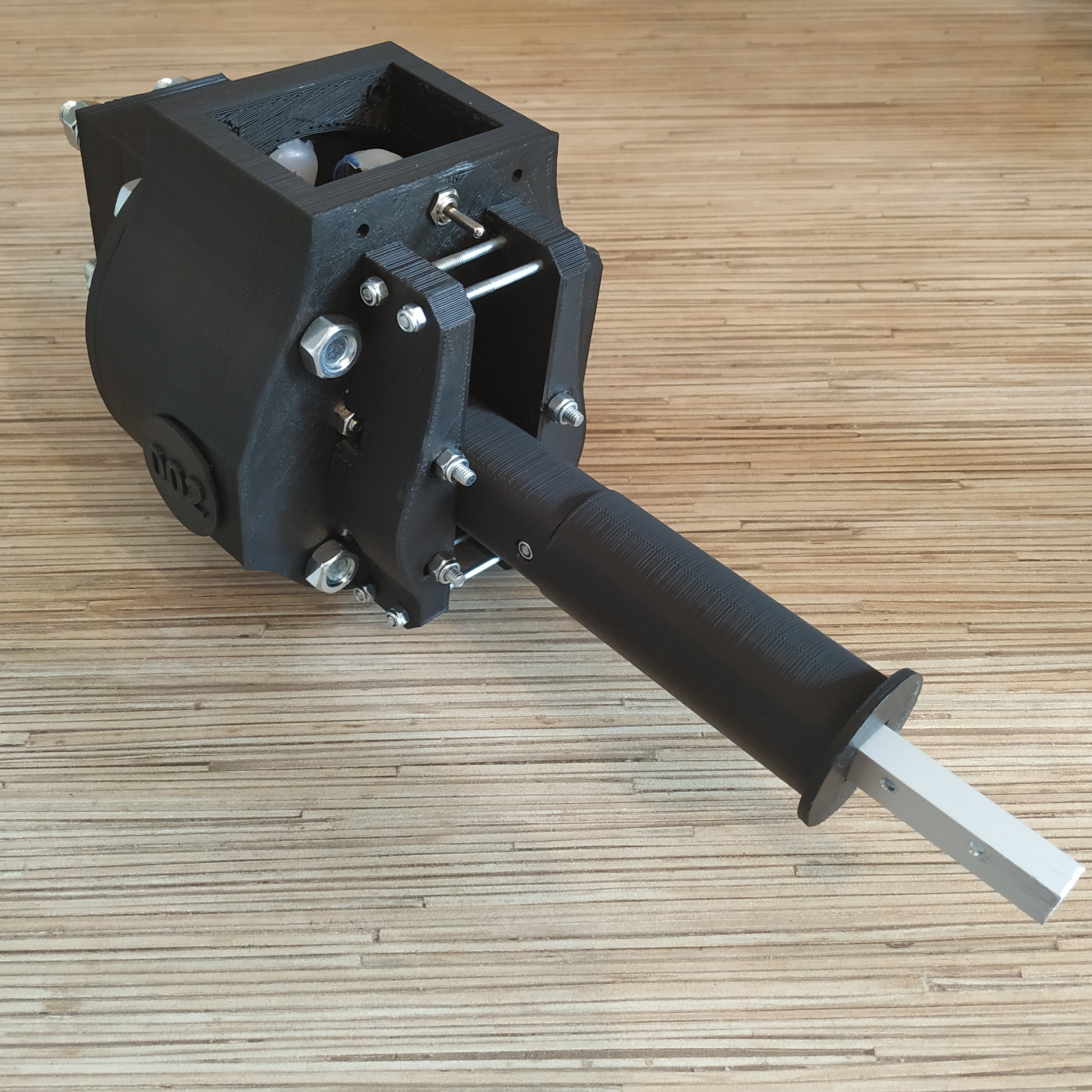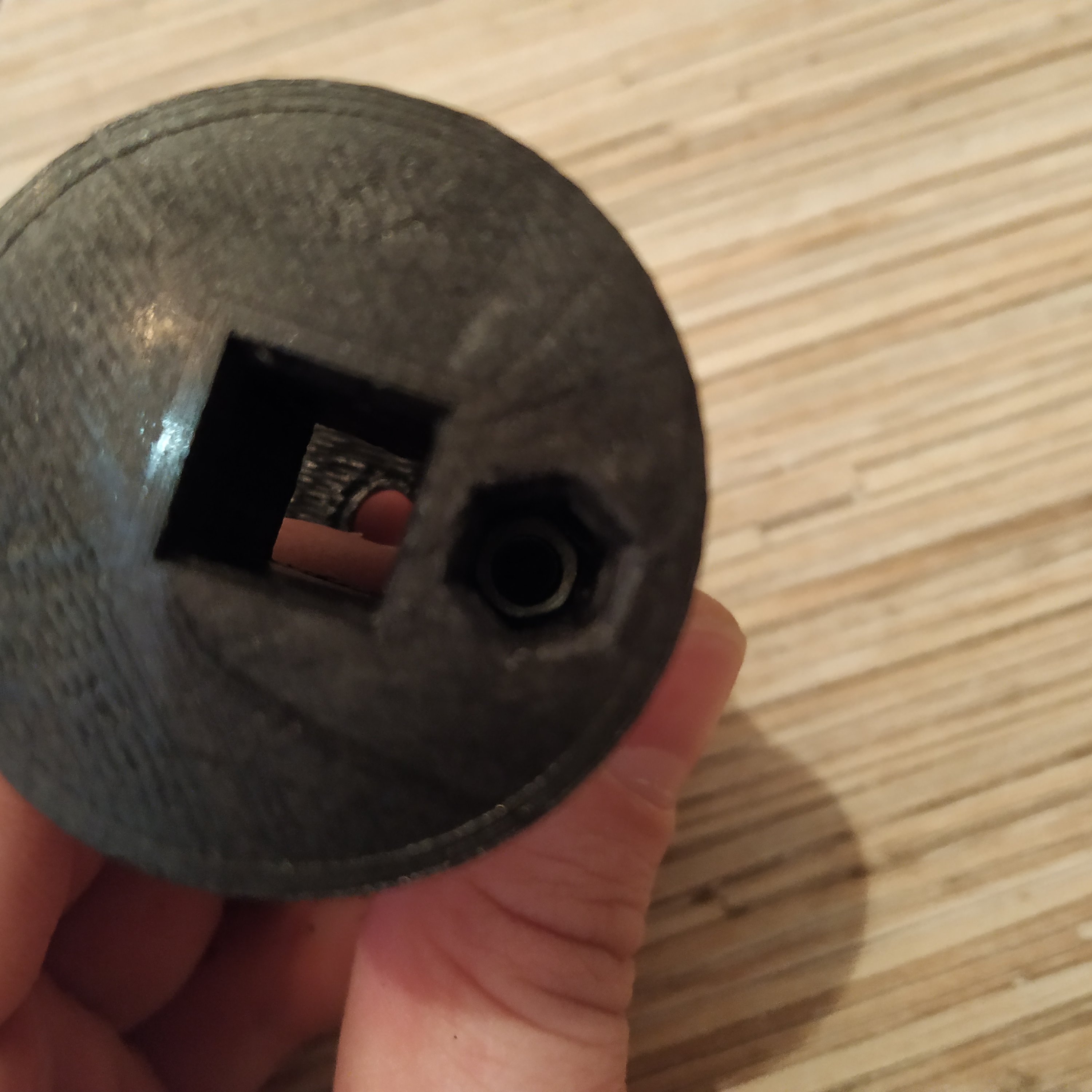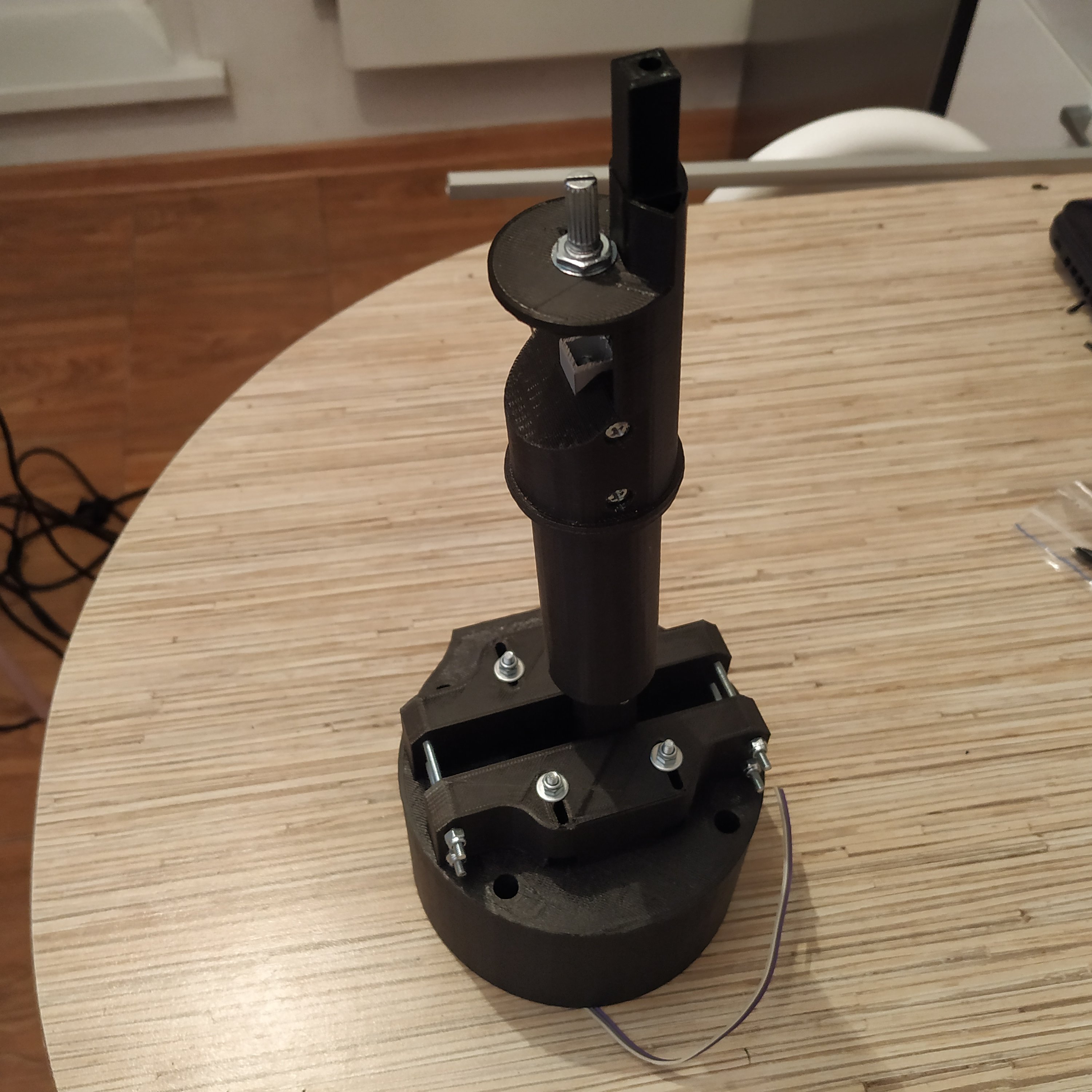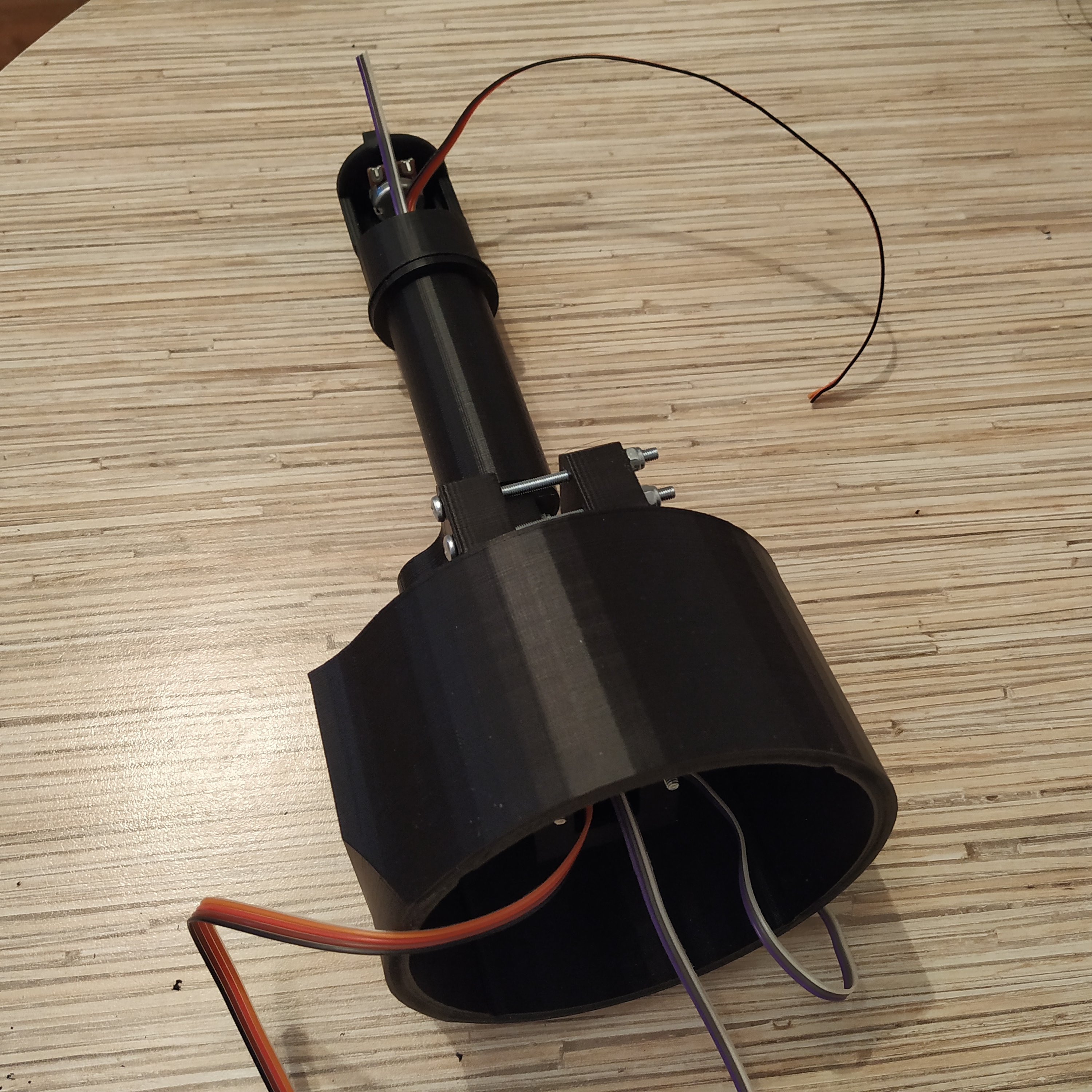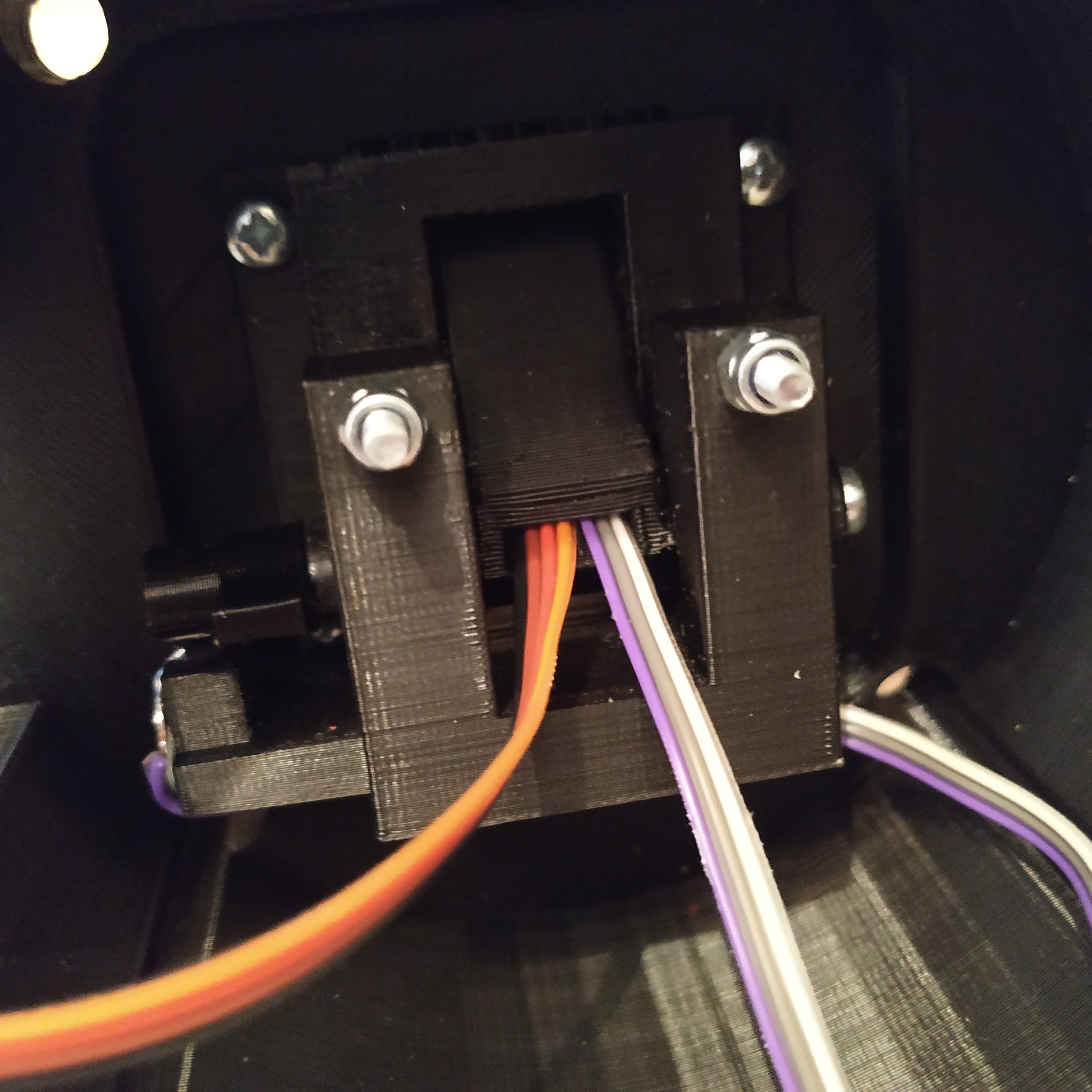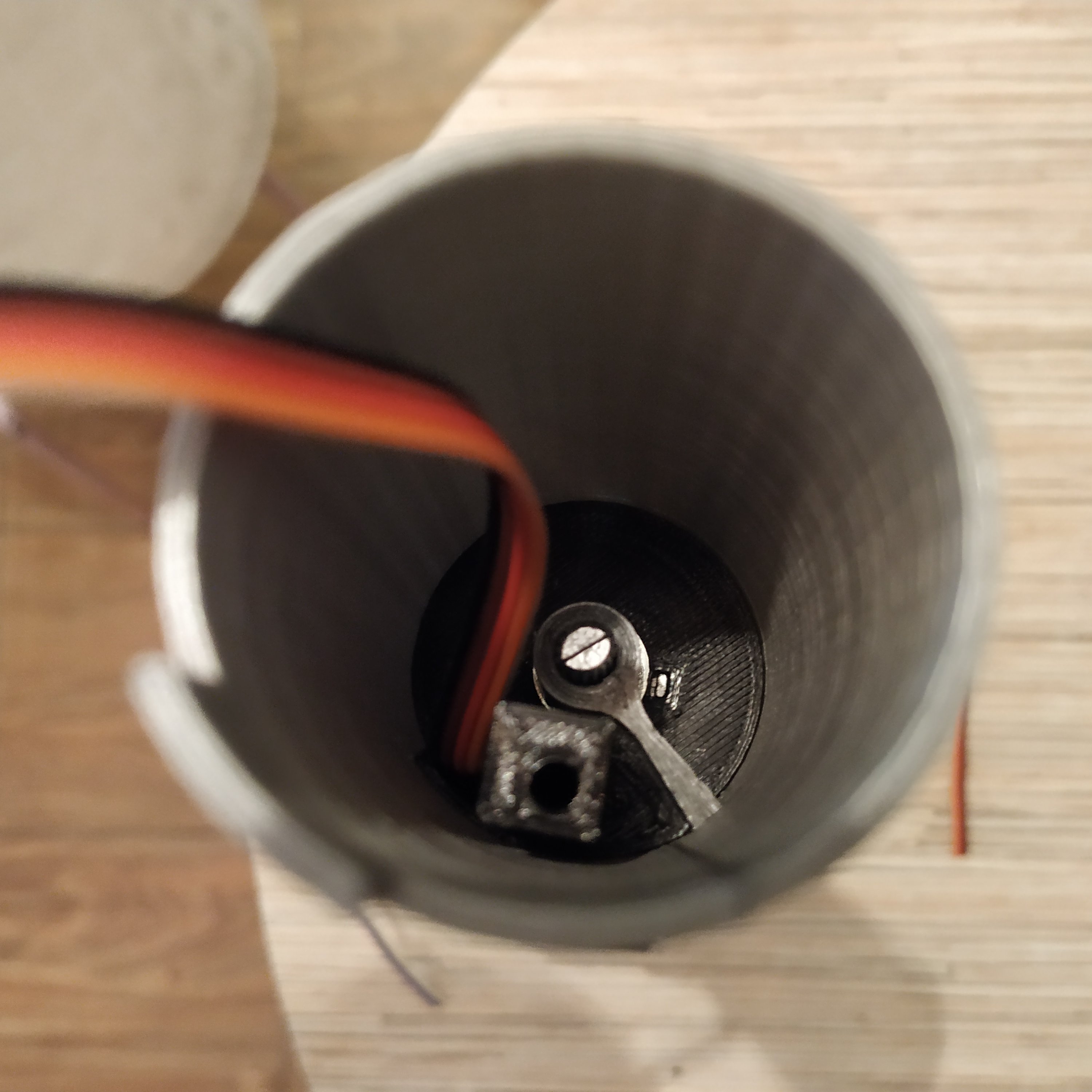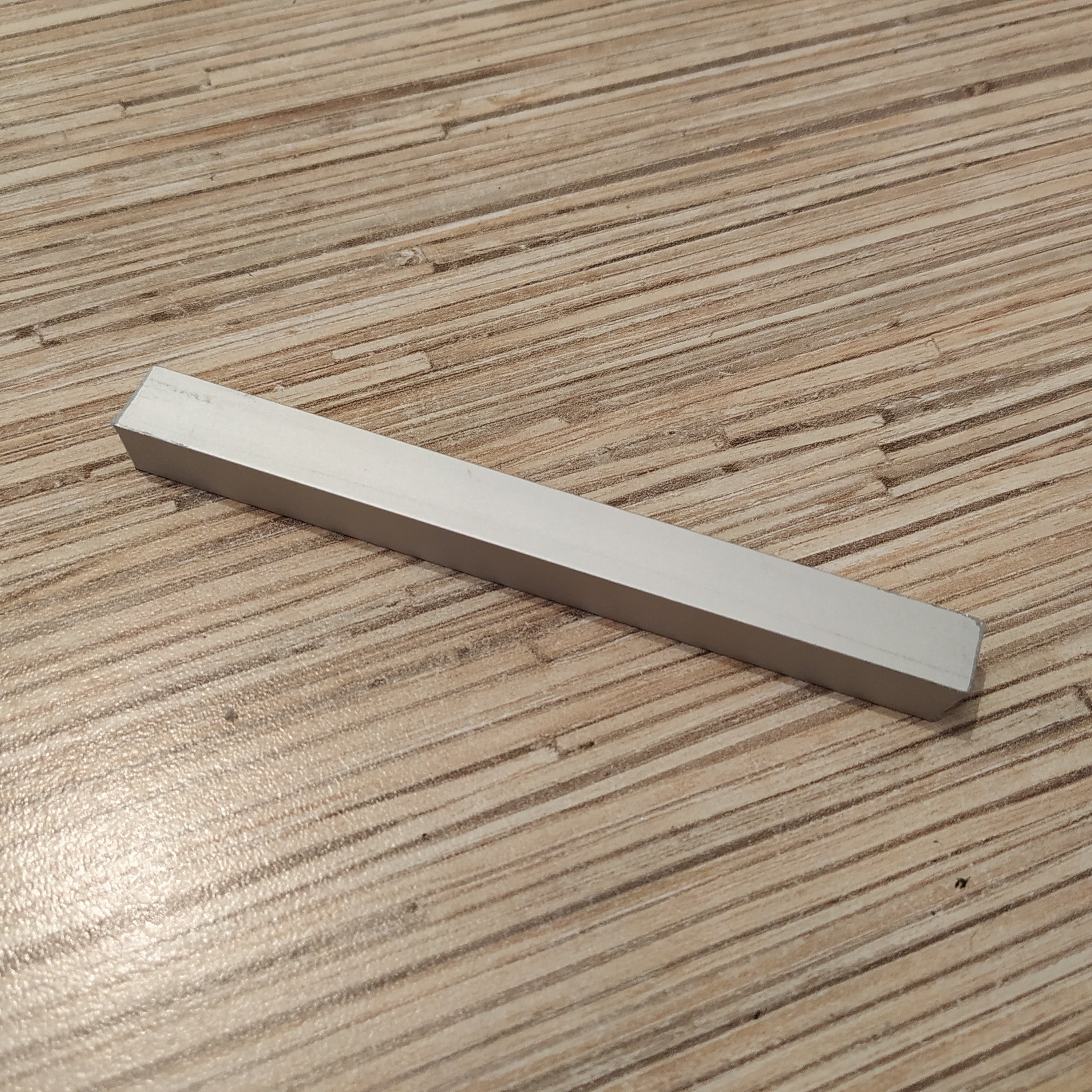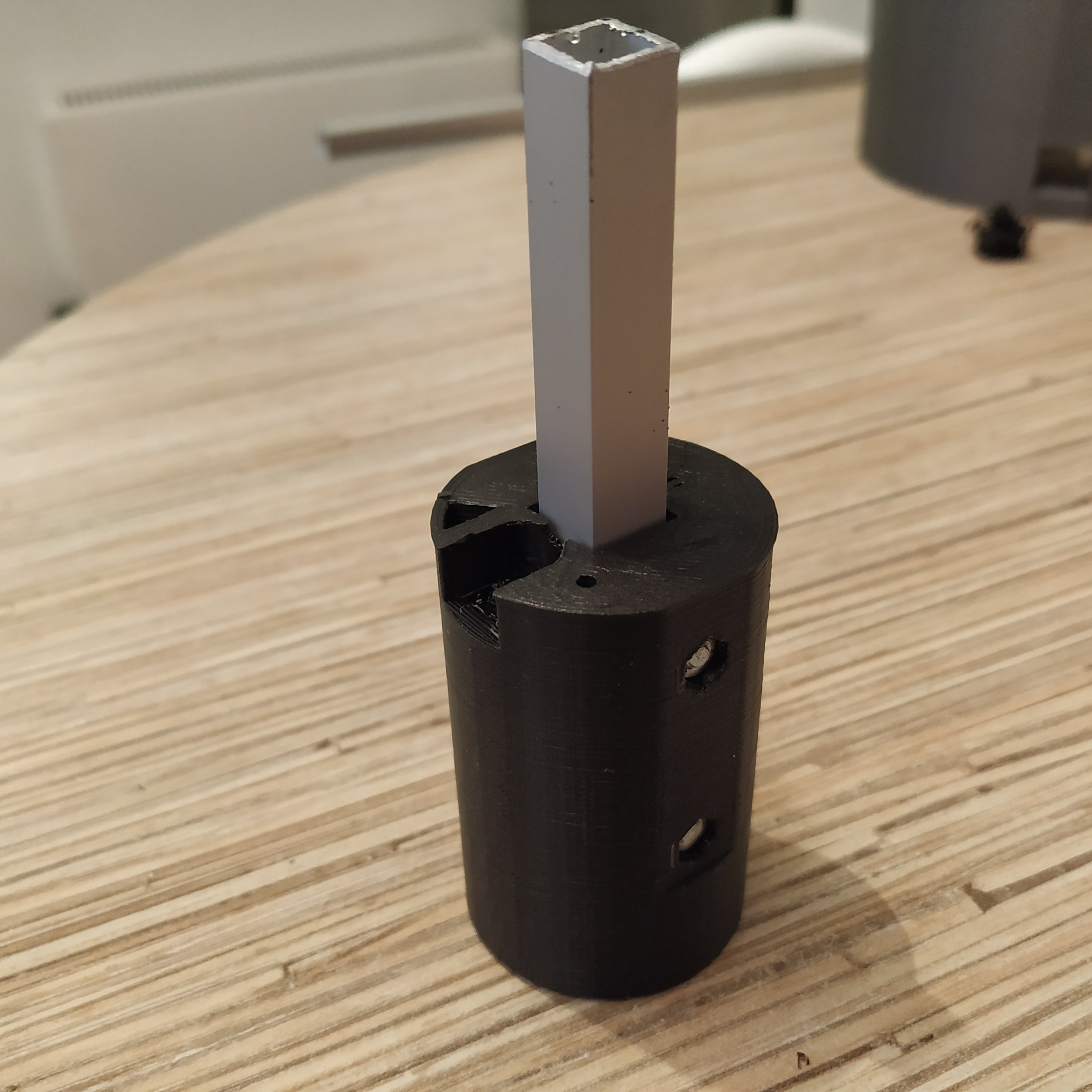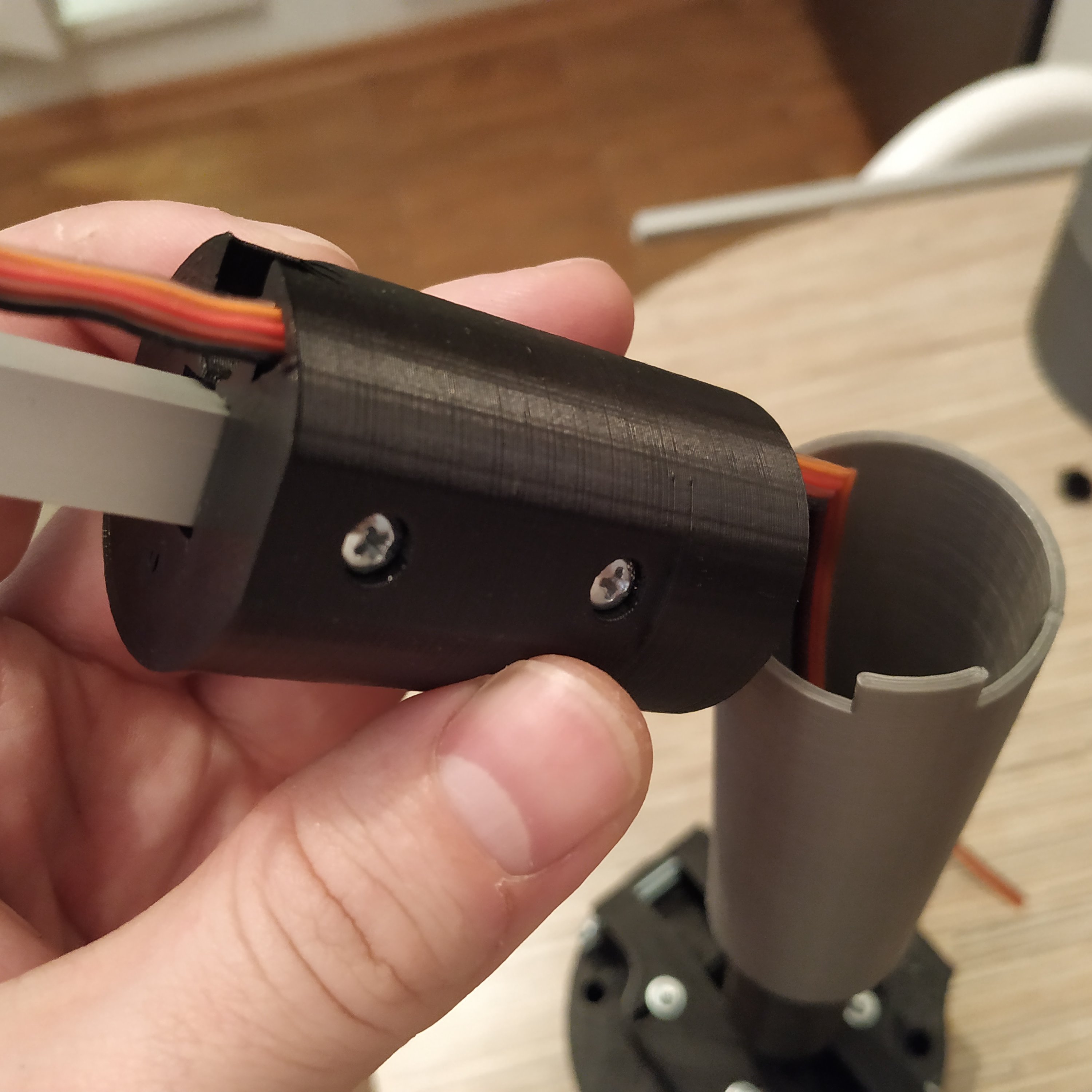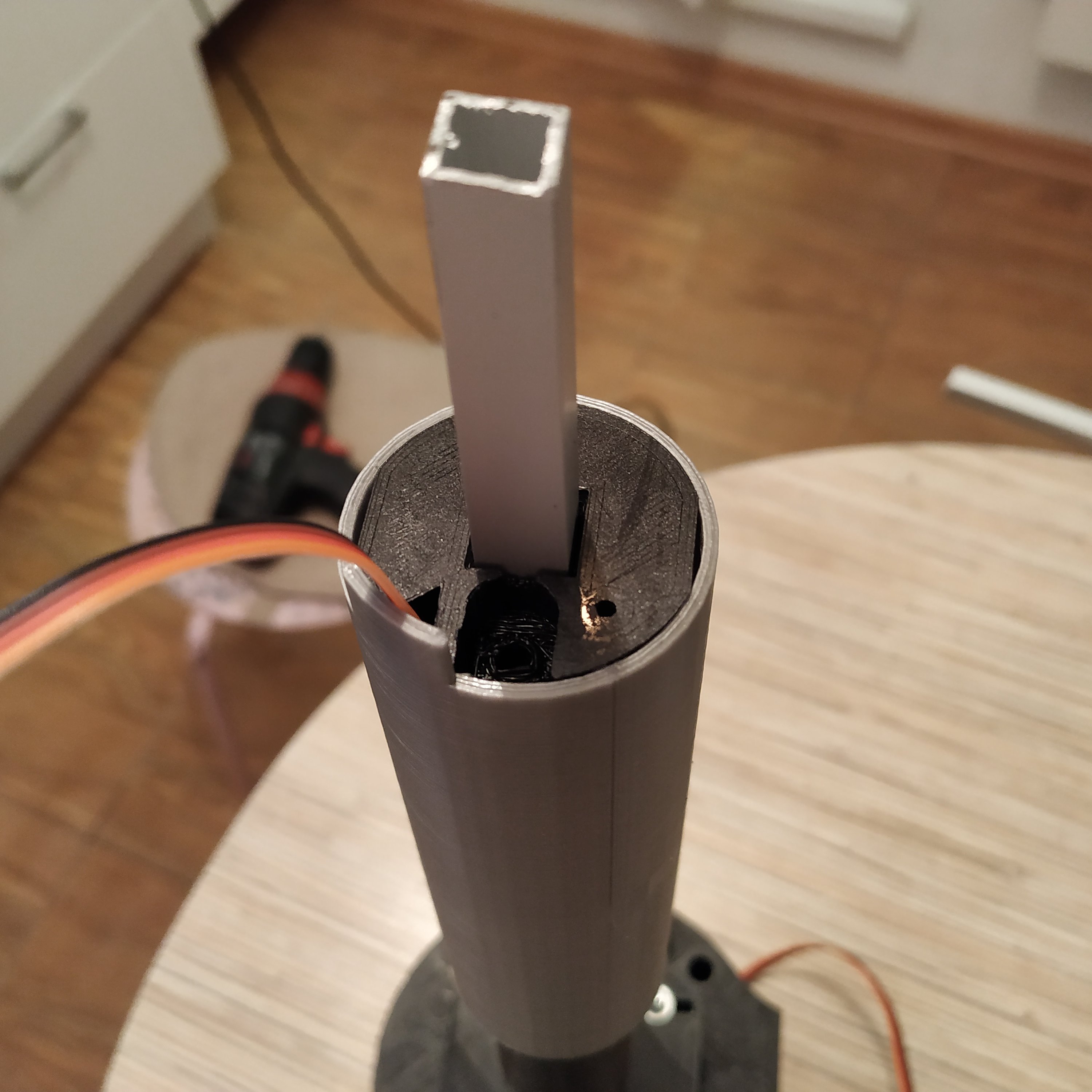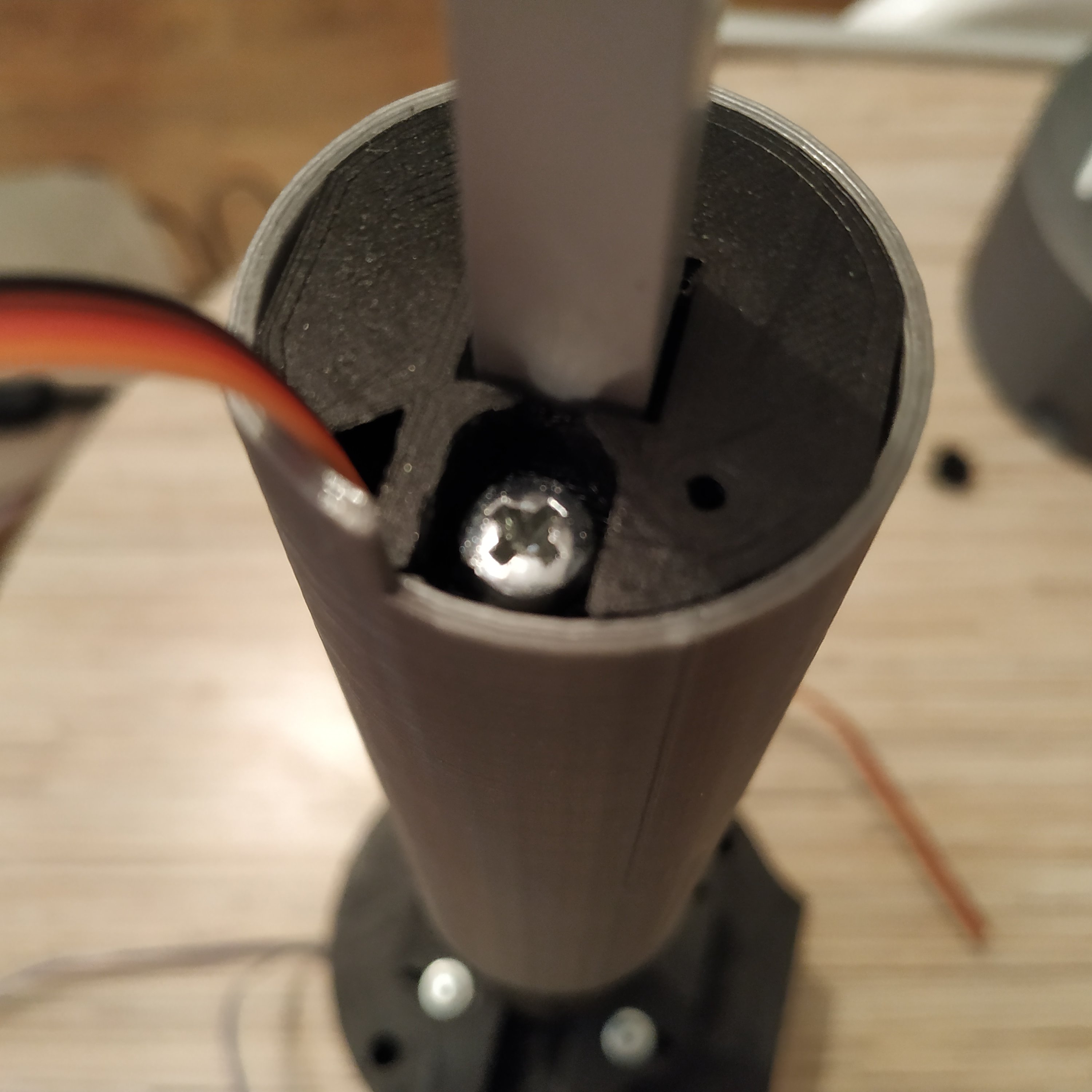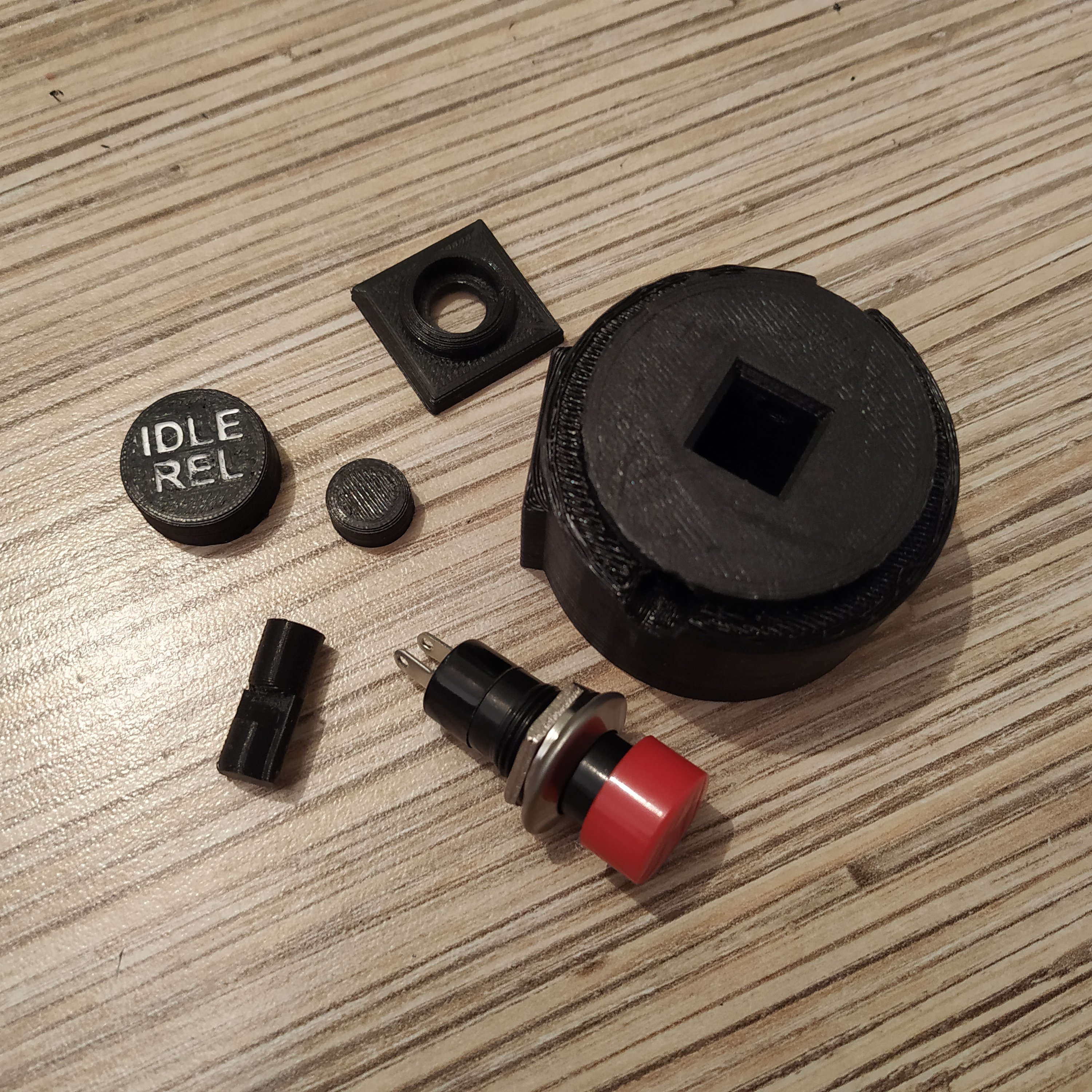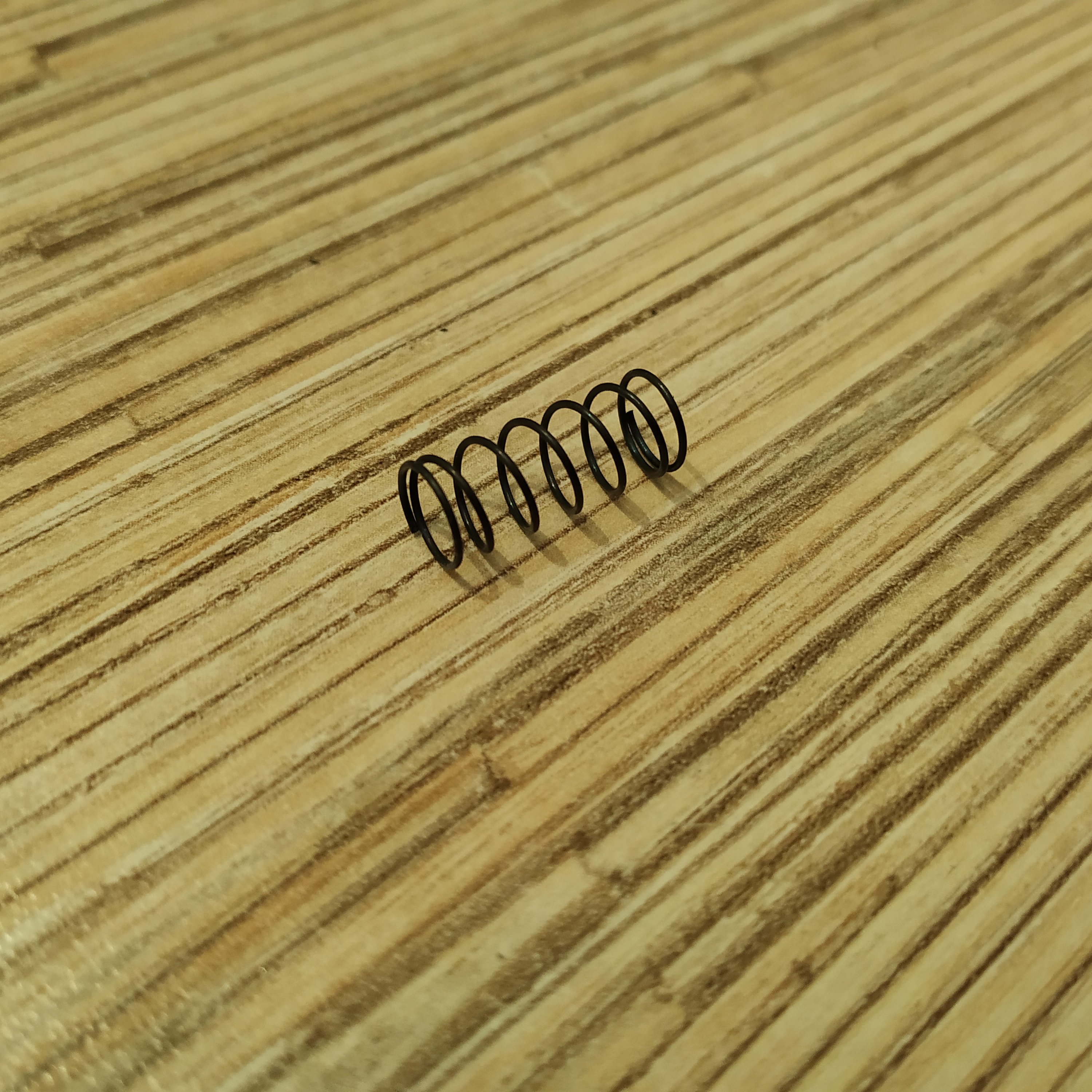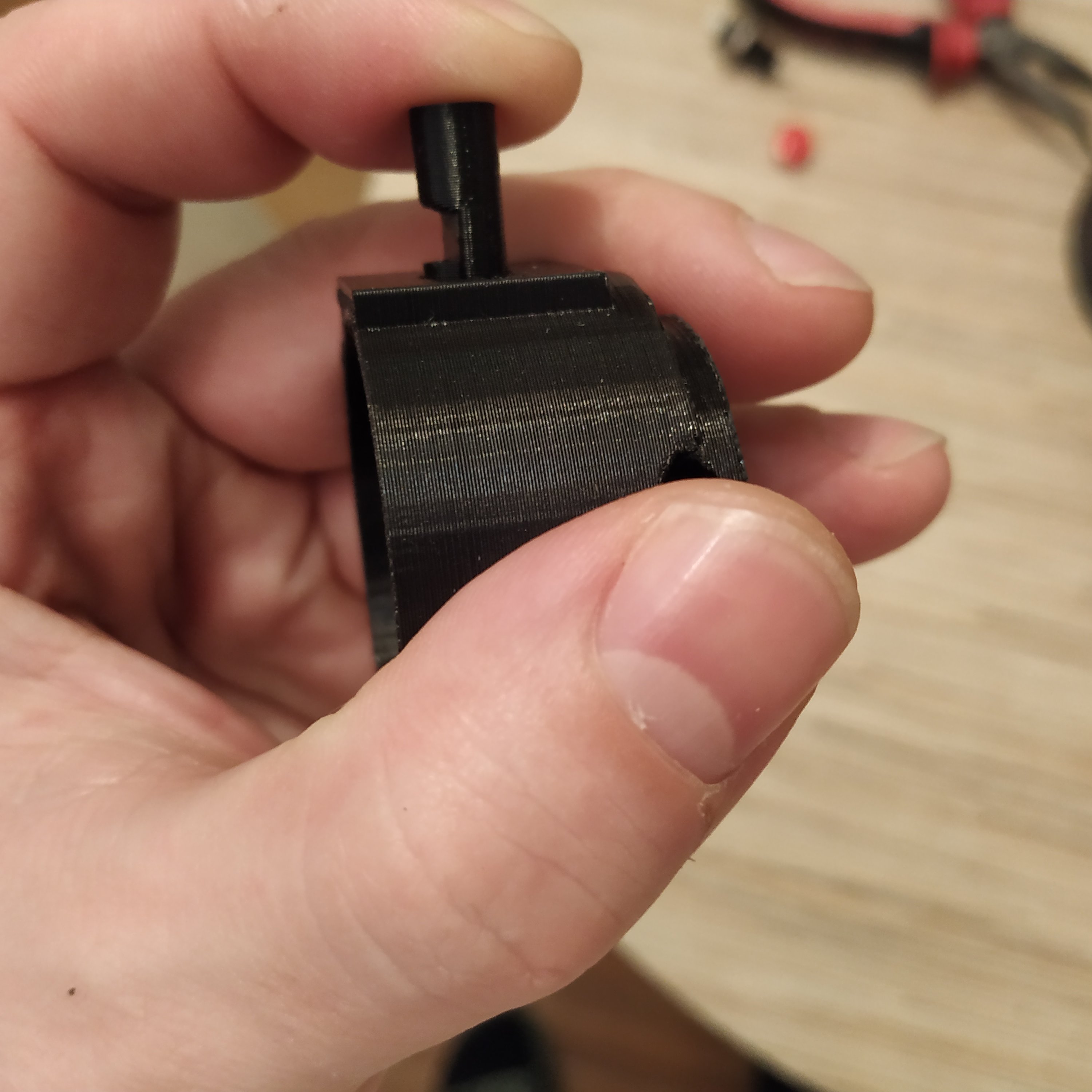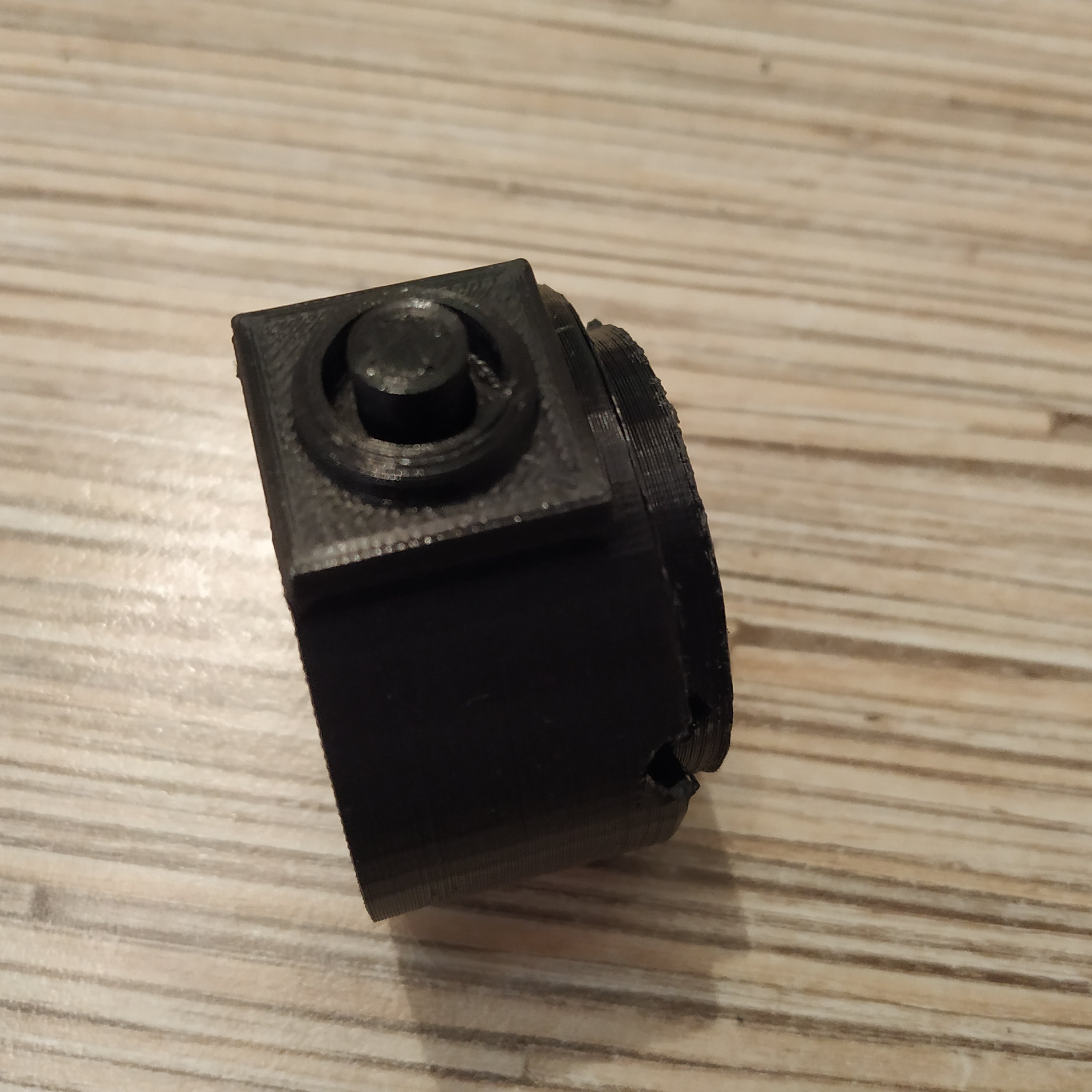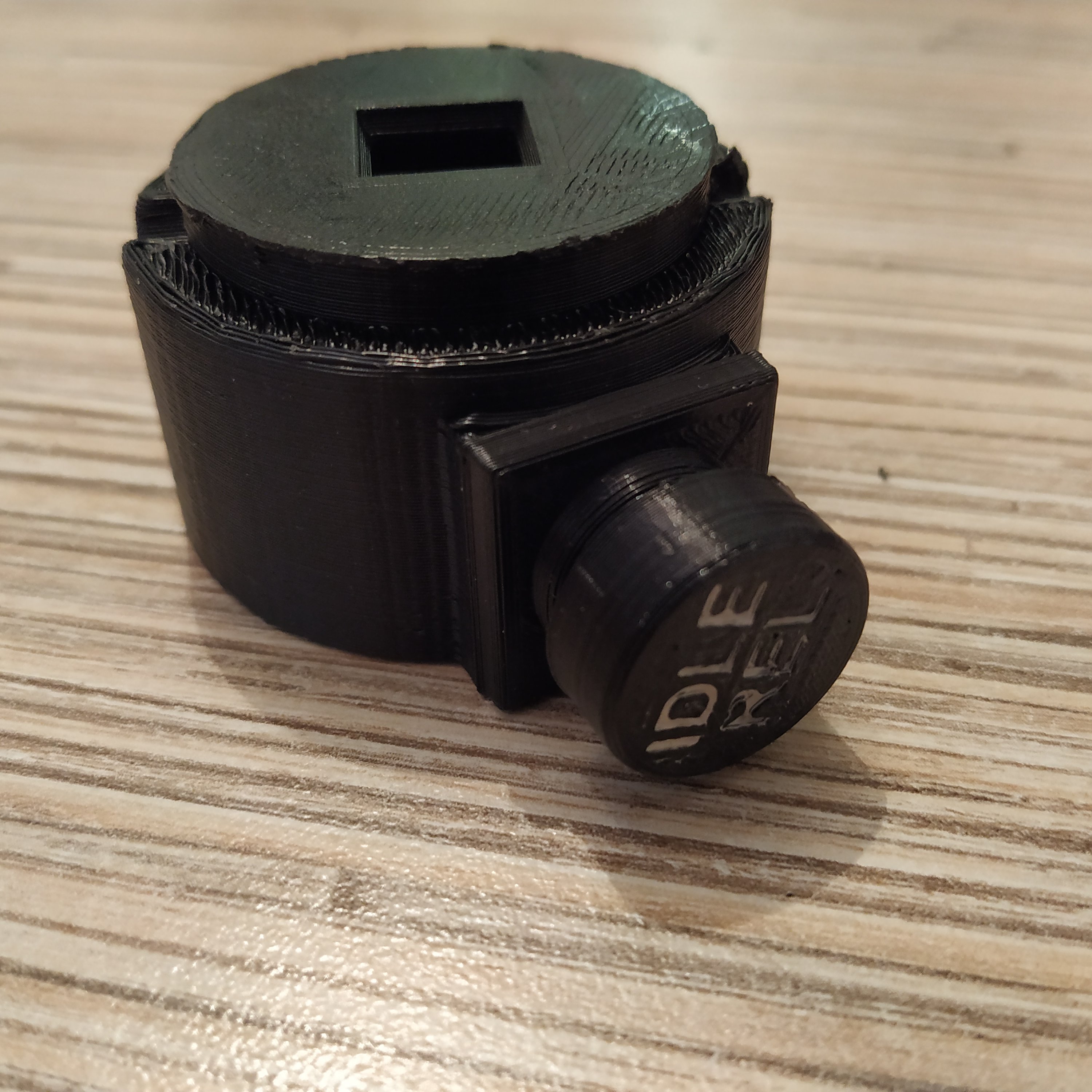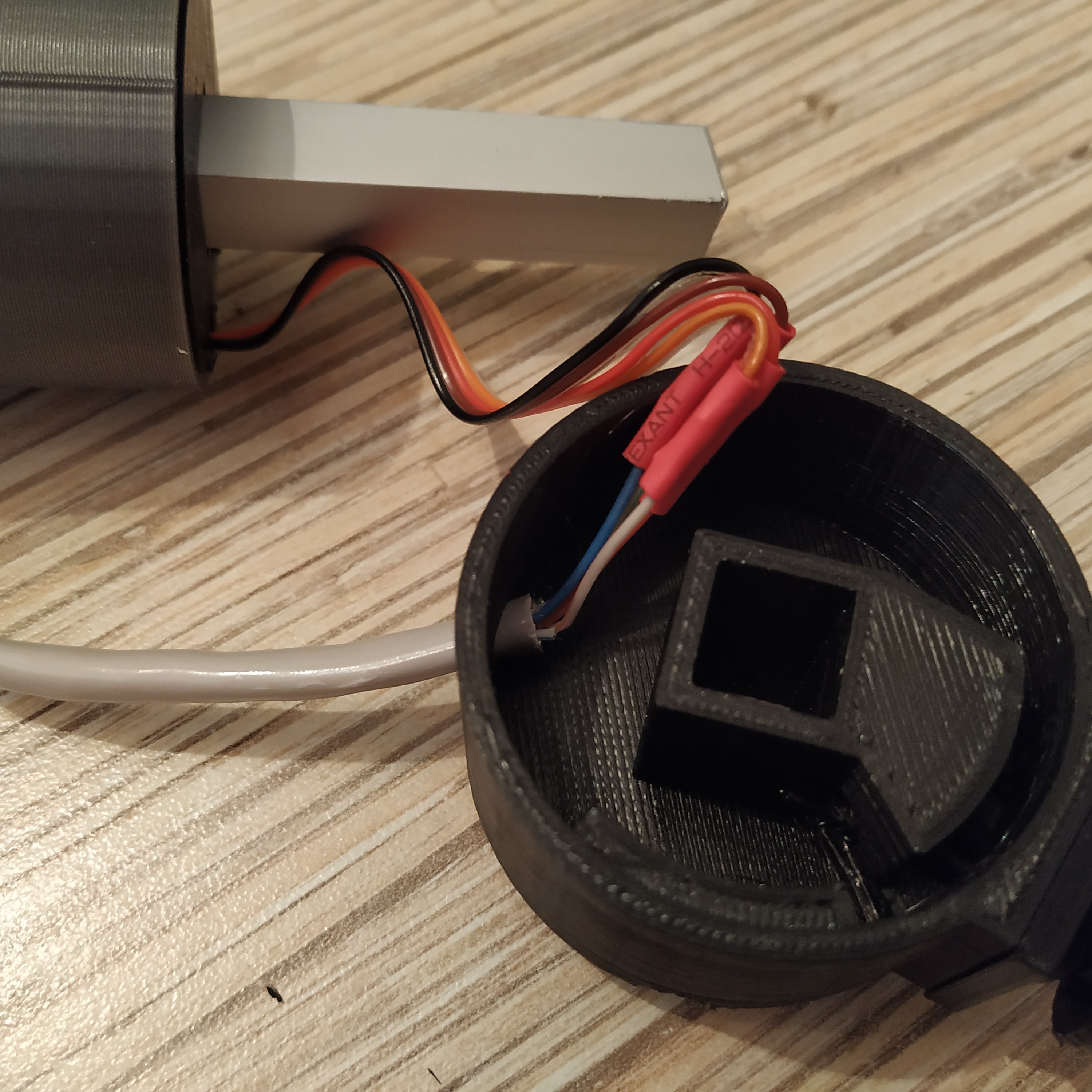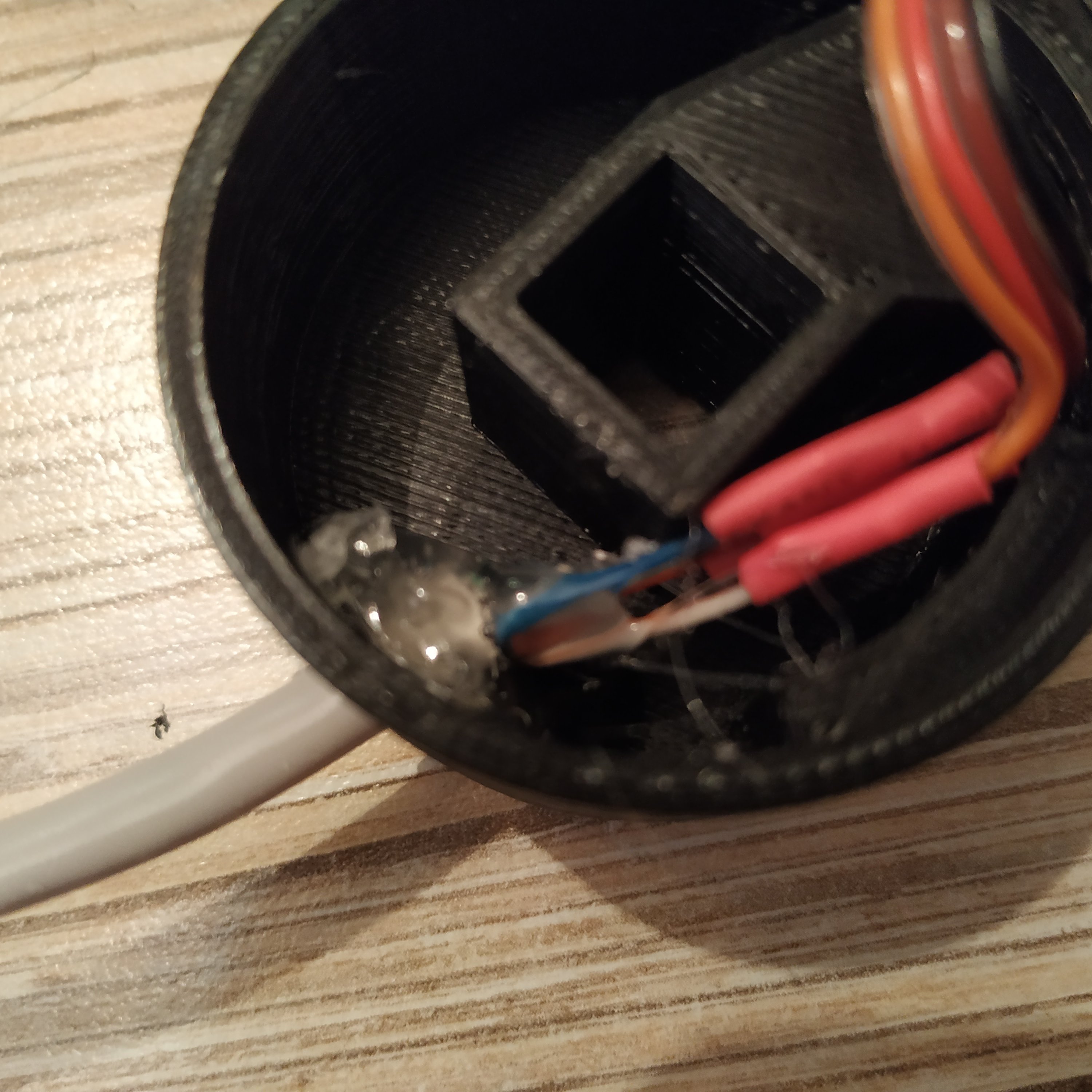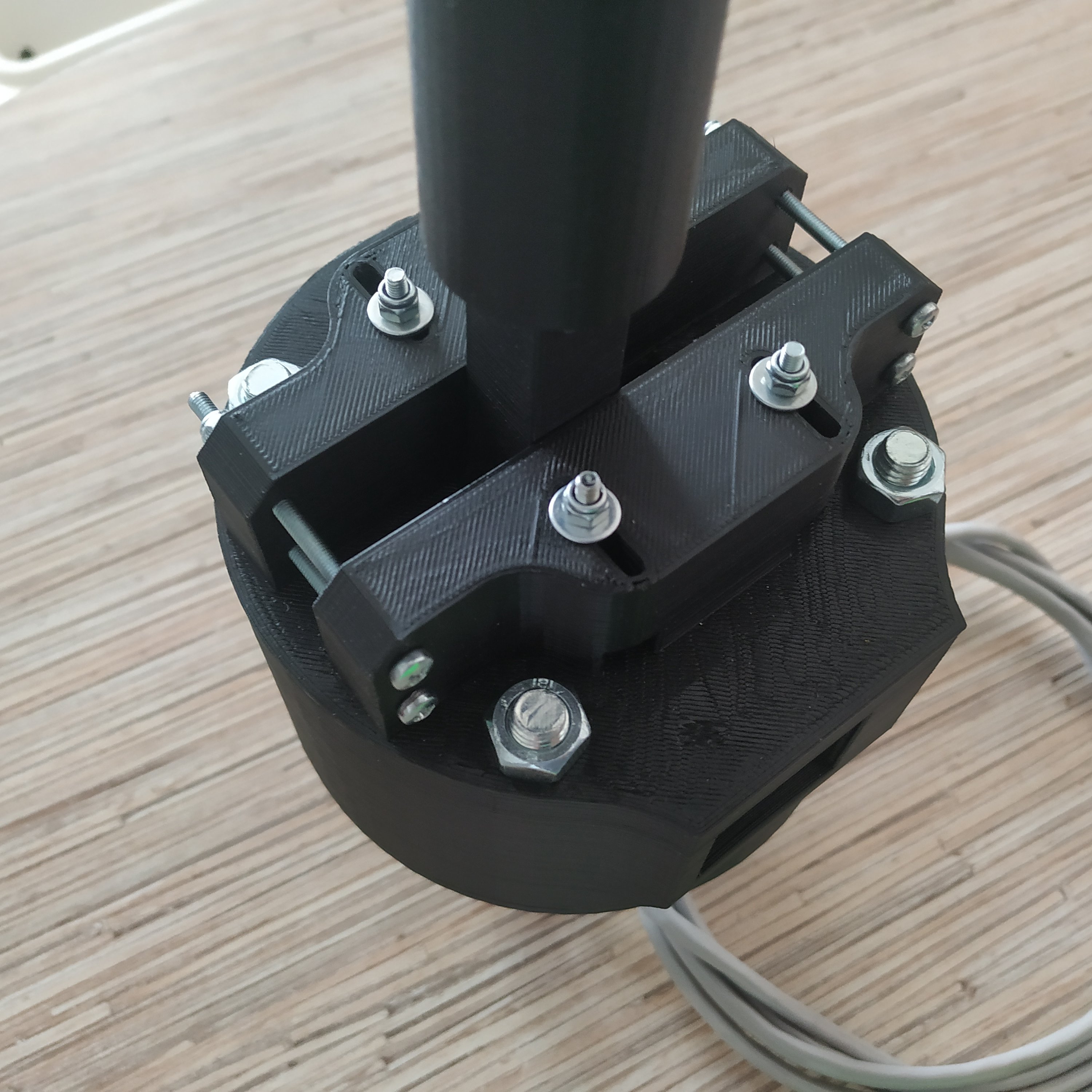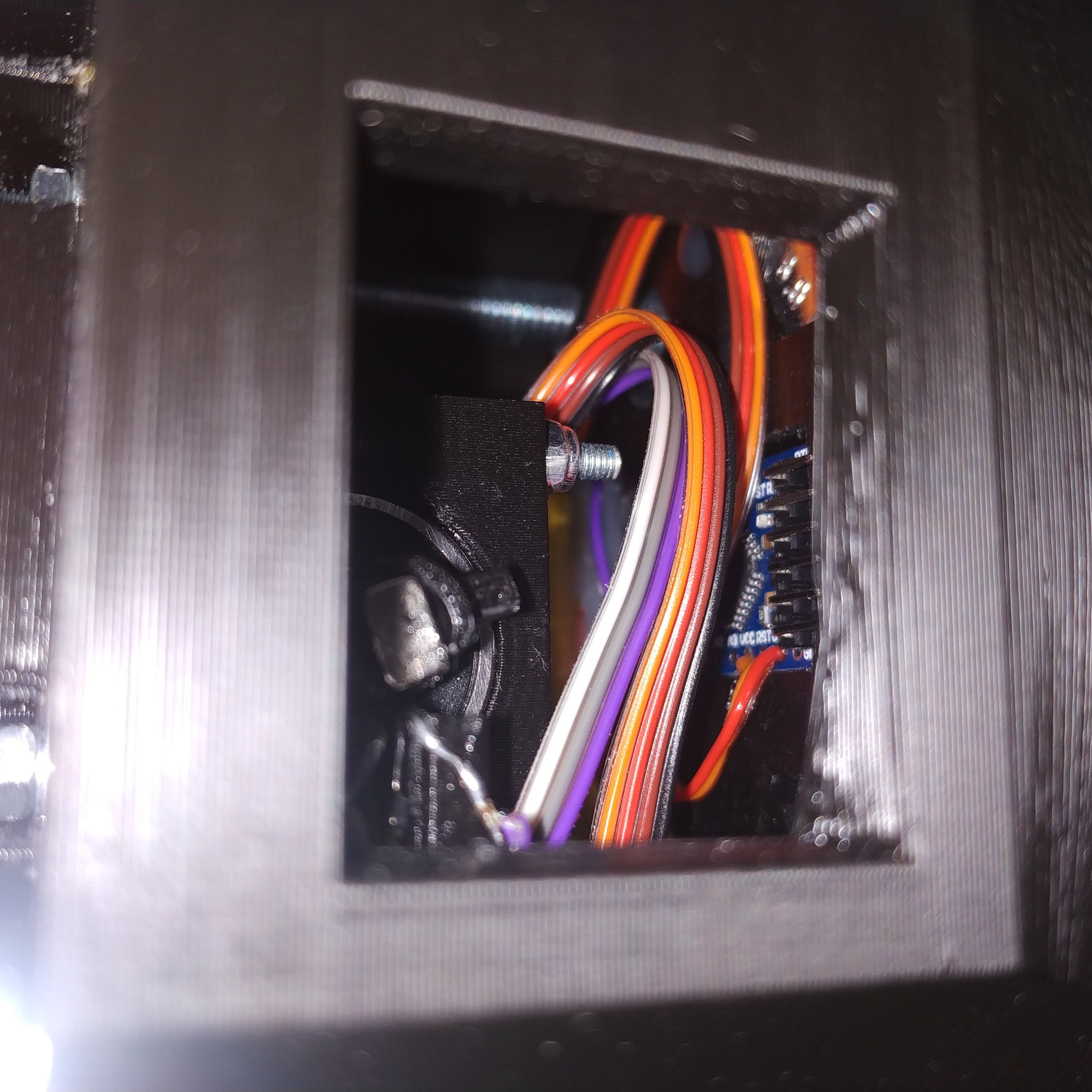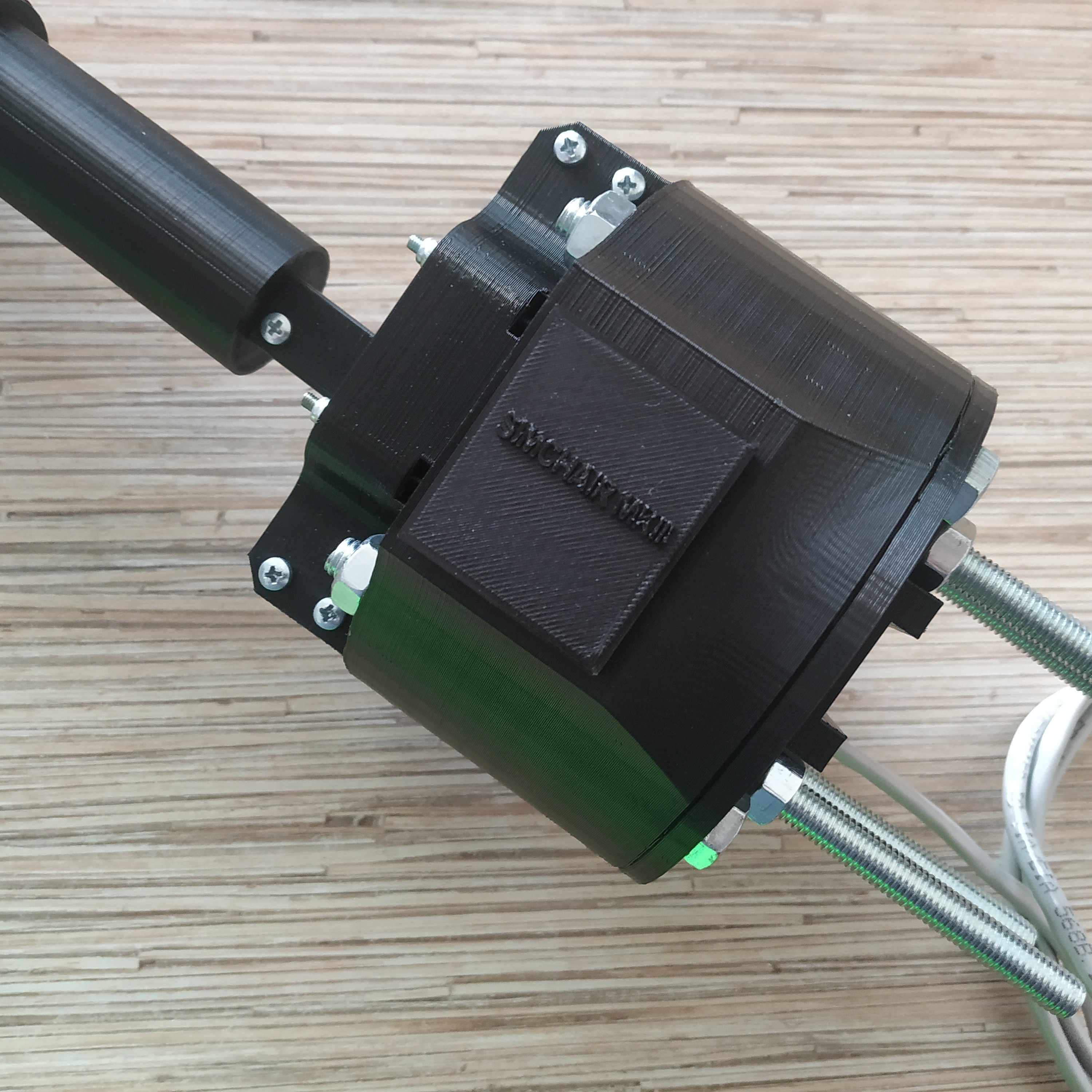This is an old revision of the document!
Table of Contents
Simchair MKIV collective single throttle lever body with a physical idle stop detent
This manual describes the process of building a single throttle lever body, with interchangeable heads, and a physical idle-stop detent latch. This manual was ported from the MKIII version, so you will see the MKIII collective base in the pictures: please ignore this.
Components
- 1 x 200x10x10mm aluminum square pipe
- 1 x 105x10x10mm aluminum square pipe
- 6 x M3x30mm screws and nuts
- 1 x M3 x 35mm screw and a nut
- 1 x M4x80 bolts
Repository path
simchair4_models\printable components\peripherals\helicopter\collective lever\b_lever bodies\single throttle
Assembly highlights
Please remember to print the latch pin using 100% infill: At 40% infill, some users have reported issues with these parts breaking.
Assembly Guide
1. Assemble the collective base MKIV.
2. Install the decorative cover onto the 10mm tubing.
3. Press-fit an M4 nut into the socket in the throttle frame part 1.
4. Insert a potentiometer into throttle frame p1.
5. Put the throttle frame part 1 onto the 10mm tubing. Drill holes in 10mm tubing through holes of the frame part 1.
6. Press-fit nuts into their sockets and insert 2 M3x30mm screws.
7. Route 4-wire I2C cable and 3-wire pot cable through the lever. This step may require some patience depending on the wires being used.
8. Solder the pot wires, and route the I2C cables through the cable channel, in the throttle frame: Part 1.
9. Turn the pot fully to the left, then just a notch to the right. Put the throttle grip on (widen its hole or squeeze the pot knob with pliers if needed) in a way that it will be in “fully open” position (see picture below). Make sure it rotates freely.
10. Cut a 105mm piece of aluminum tubing and file its ends.
Insert the tubing piece into the throttle frame p2, drill it through its holes, press-fit nuts to sockets of throttle frame p2 and use 2 M3x30mm screws to fix the tubing piece in it.
11. Route 4-wire I2C cable through the throttle frame p2 part. Insert the part into the throttle grip, so the pin of throttle frame p1 will go into the socket in throttle pin p2.
12. Fasten 2 parts of the throttle frame together with an M4x80mm screw.
13. We will be using the physical throttle latch mod for this build. To assemble the modified I2C cable housing part, we will need a PBS-16B button, as well as printed parts from the mod folder. Note that the latch pin should be printed with 100% infill.
14. Disassemble the button and take out the spring. Put it into the throttle latch socket.
15. Insert throttle latch pin into the socket, squeezing the spring.
16. Glue the socket cover to the I2C connector housing part.
17. Glue the button top to the latch. You can choose between a small button and a scale 206-style one.
18. Solder the 4-wire I2C cable to an ethernet cable.
ETHERNET WHITE-ORANGE -> I2C HEAD CABLE WIRE 1 (+5V) ETHERNET ORANGE -> I2C HEAD CABLE WIRE 2 (GND) ETHERNET WHITE-GREEN -> I2C HEAD CABLE WIRE 3 (SCL) ETHERNET BLUE -> I2C HEAD CABLE WIRE 4 (SDA)
19. Add some hot glue to fix the ethernet cable in place.
20. Put the I2C cable housing onto the lever. Secure with an M3x35mm screw.
21. Solder cables to an Arduino Pro Mini board as follows:
THROTTLE POT AND I2C HEAD CABLE +5V -> Pro Mini VCC THROTTLE POT and I2C HEAD CABLE GND) -> Pro Mini GND THROTTLE POT SIGNAL -> A1 I2C HEAD CABLE SCL -> PRO MINI PIN A5 I2C HEAD CABLE SDA -> PRO MINI PIN A4
22. Flash the board with single_collective.ino and calibrate the lever.
23. Now it’s a good idea to do some cable management.
24. Put the lid onto the housing and secure with 4 M8x75mm screws.
25. Make sure cables are fine inside of the enclosure and nothing touches the magnet, then close the hatch.

